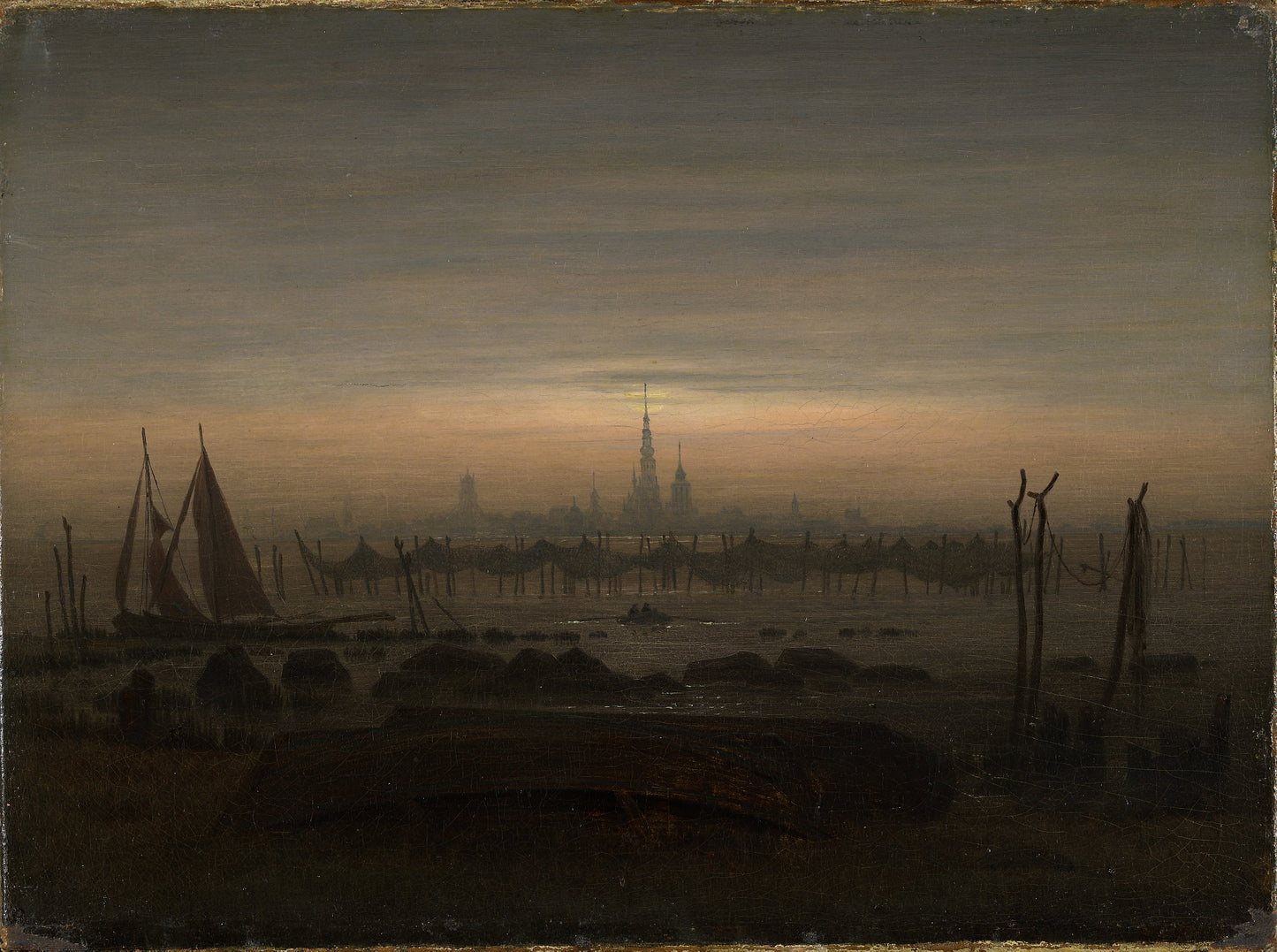Caspar David Friedrich
Greifswald in the moonlight
Greifswald in the moonlight
Couldn't load pickup availability
High-quality reproductions from the National Museum's collection. Posters by DAIDDA are printed on Litho White Matt - 230 gram photo paper in premium quality. Artprints by DAIDDA provide outstanding colors, sharpness and durability in museum quality - printed on Moab Entrada Natural 300 gram cotton art paper. Printed on a matte surface with scratch-resistant pigment ink.
About the original:
Date: 1835
Other titles: View from Grindelwald in Switzerland (ENG)
Designation: Painting
Material and technique: Oil on cardboard glued on cardboard
Technique: Oil
Material: Cardboard, Paper
Dimensions: 21 x 27 cm
Subject: Visual arts
Classification: 532 - Visual arts
Acquisition: Gift 1891 from the Association to the National Gallery's extension
Inventory no.: NG.M.00386
Registration level: Single object
Owner and collection: The National Museum of Art, Architecture and Design, Visual Art Collections
Shipping and returns
Shipping and returns
Shipping: We deliver to Scandinavia, the EU, the USA and several other countries. Please contact us if your country is not listed and we will try to arrange delivery.
Delivery time: 2-5 days within Norway, 7 days in Europe, 14 days globally.
Packaging: Our products are made to order and sent rolled in environmentally friendly packaging.
Customs Fees: International orders may be subject to customs fees, which are not included in shipping costs.
Return policy: You can return images within 14 days. See our returns page for more information.
Secure Payment: We never store your payment details. See our privacy policy for details.

See all works
-
Greifswald in the moonlight
Vendor:Caspar David FriedrichRegular price From 150,00 NOKRegular priceUnit price per

Caspar David Friedrich
Caspar David Friedrich was a German painter who is known as the most typical representative of German romantic painting. He studied at the academy in Copenhagen from 1794 to 1798, and then settled in Dresden.
His association with the painter Otto Runge, other leading figures in German romanticism and the Norwegian JC Dahl with his realistic view of the landscape was decisive for his development as an artist. Friedrich used landscape painting to express moods. He based himself on memories, but the representations were nevertheless factual and based on a thorough study of reality. The motifs were often simple, but stylized with great impact and atmosphere. The powerful, pure nature was supposed to symbolize holidays and devotion and bear the promise of a good and divine government.
His first major work, an altarpiece, shows a crucifix on a mountain top (1808). This was probably the first time a landscape image was used for such an application. Friedrich's use of color was sober, yet nicely nuanced. He was of great importance to JC Dahl and to contemporary German art, but nevertheless he was long forgotten.




